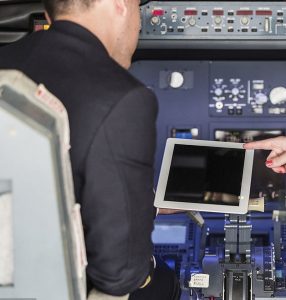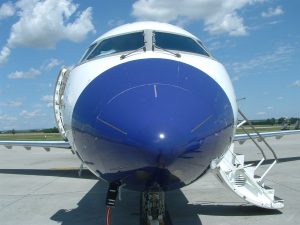Who Should Do A Jet Orientation Course (JOC)?
 The Jet Orientation Course (JOC) is a pivotal training program for pilots aspiring to transition from propeller-driven aircraft to jet aircraft. This specialized course provides the essential skills and knowledge required for operating jet aircraft, focusing on handling characteristics, operational procedures, and the complexities of high-speed flight. Understanding who should undertake a JOC is crucial for pilots planning their career path in aviation. This article delves into the various categories of pilots who would benefit from a JOC and the advantages it offers in enhancing their professional capabilities.
The Jet Orientation Course (JOC) is a pivotal training program for pilots aspiring to transition from propeller-driven aircraft to jet aircraft. This specialized course provides the essential skills and knowledge required for operating jet aircraft, focusing on handling characteristics, operational procedures, and the complexities of high-speed flight. Understanding who should undertake a JOC is crucial for pilots planning their career path in aviation. This article delves into the various categories of pilots who would benefit from a JOC and the advantages it offers in enhancing their professional capabilities.
Jet Orientation Course (JOC)
The JOC is designed to bridge the gap between general aviation or commercial flight training and the advanced requirements of flying jet aircraft. It typically includes both theoretical and practical training, emphasizing the differences in performance, systems, and handling characteristics between jets and propeller-driven aircraft. The course prepares pilots for the high-speed environment of jet operations, focusing on topics such as jet aerodynamics, engine performance, high-speed flight dynamics, and cockpit management.
1) Aspiring airline pilots
Transition from CPL/IR to airline operations
For pilots who have completed their Commercial Pilot License (CPL) with Instrument Rating (IR) and are aiming to join an airline, the JOC is a critical step. Airlines often operate jet aircraft, and the transition from propeller-driven aircraft to jets requires specific training that is not covered in basic CPL or IR programs. The JOC equips aspiring airline pilots with the necessary skills to handle jet aircraft and prepares them for the challenges of airline operations.
Preparation for type rating training
Type rating training for specific jet aircraft requires a foundational understanding of jet operations. The JOC provides this foundation, making the subsequent type rating training more manageable. It ensures that pilots are familiar with the basic handling and operational characteristics of jets, which allows them to focus more on the specifics of the aircraft type during type rating courses.
2) Pilots with general aviation experience
Expanding career opportunities
Pilots with extensive experience in general aviation, typically involving propeller-driven aircraft, may seek to expand their career opportunities by transitioning to jet operations. The JOC is essential for these pilots as it provides the necessary training to handle the significant differences between propeller aircraft and jets. By completing the JOC, general aviation pilots can enhance their employability and open doors to more advanced and lucrative flying opportunities.
Enhancing flight skills and knowledge
The skills and knowledge required for jet operations differ considerably from those needed for propeller-driven aircraft. The JOC offers in-depth training on jet-specific topics such as high-speed aerodynamics, jet engine performance, and advanced cockpit management. This training not only enhances a pilot’s skill set but also broadens their understanding of different aircraft systems and operations.
3) Military pilots transitioning to civil aviation
Differences between military and civil jet operations
Military pilots often operate jet aircraft, but the procedures, protocols, and operational environments can differ significantly from those in civil aviation. The JOC helps military pilots transition smoothly to civil jet operations by providing training on the specific requirements and standards of commercial aviation.
Adapting to civil aviation procedures
Civil aviation involves different operational procedures, air traffic control interactions, and regulatory requirements compared to military aviation. The JOC familiarizes military pilots with these differences, ensuring they are well-prepared for the civil aviation environment. This training includes learning civil aviation SOPs, CRM techniques, and adapting to the more passenger-oriented focus of commercial operations.
4) Corporate and business aviation pilots
Operating larger, more complex jets
Corporate and business aviation pilots may start their careers flying smaller, propeller-driven aircraft. However, as they advance in their careers, they may transition to larger, more complex jet aircraft. The JOC is crucial for these pilots, providing the training necessary to handle the unique challenges of jet operations, including higher speeds, advanced systems, and more sophisticated flight dynamics.
Improving safety and efficiency
The JOC enhances the safety and efficiency of corporate and business aviation operations by equipping pilots with advanced handling skills and operational knowledge. This training is particularly important for ensuring smooth and safe operations in the often demanding and dynamic environments of corporate aviation.
5) Pilots seeking career advancement
Building a competitive edge
In the highly competitive field of aviation, additional qualifications can significantly enhance a pilot’s career prospects. The JOC is a valuable credential that demonstrates a pilot’s readiness to operate jet aircraft and handle the complexities of jet operations. This qualification can make a pilot more attractive to potential employers, giving them a competitive edge in the job market.
Preparation for higher positions
Pilots who aspire to higher positions, such as captain or chief pilot roles, will benefit from the advanced training provided by the JOC. The course’s focus on jet operations, high-speed flight dynamics, and advanced cockpit management prepares pilots for the increased responsibilities and challenges of higher-level positions.
Benefits of the Jet Orientation course
Enhanced understanding of jet operations
The JOC provides a comprehensive understanding of jet operations, covering topics such as:
-
- Jet aerodynamics: Understanding the principles of high-speed flight, including the effects of compressibility, shock waves, and transonic flight.
- Engine performance: Knowledge of jet engine operation, performance characteristics, and fuel management.
- Advanced flight planning: Techniques for efficient and effective flight planning in a jet environment, including consideration of higher speeds and altitudes.
- Cockpit management: Training in advanced cockpit management, including the use of modern avionics and automation systems.
Improved handling skills
Jet aircraft have different handling characteristics compared to propeller-driven aircraft. The JOC provides extensive training in these handling differences, ensuring that pilots are comfortable and proficient in operating jets. This includes training on:
-
- Takeoff and landing: Techniques for managing the higher speeds and performance characteristics of jets during takeoff and landing.
- High-speed flight: Handling the aircraft at higher speeds and altitudes, including managing airspeed, pitch, and power settings.
- Emergency procedures: Training in jet-specific emergency procedures, including engine failures, hydraulic issues, and other potential in-flight problems.
Enhanced safety and efficiency
The JOC emphasizes the importance of safety and efficiency in jet operations. By providing comprehensive training on jet-specific procedures and best practices, the course helps pilots operate more safely and efficiently. This includes training on:
-
- Standard Operating Procedures (SOPs): Familiarisation with airline and corporate SOPs, ensuring adherence to industry standards.
- Crew Resource Management (CRM): Advanced CRM training, emphasising teamwork, communication, and decision-making in a multi-crew environment.
- Risk management: Techniques for identifying and mitigating risks specific to jet operations.
Structure of the Jet Orientation course
Theoretical training
The theoretical component of the JOC covers a wide range of topics essential for jet operations, including:
-
- Aerodynamics: Principles of high-speed flight, including compressibility effects, shock waves, and transonic flight.
- Jet engine performance: Understanding the operation, performance characteristics, and fuel management of jet engines.
- Flight planning and management: Techniques for effective flight planning and management in a jet environment.
- Cockpit management: Training in the use of modern avionics and automation systems.
Practical training
The practical component of the JOC involves extensive hands-on training, typically conducted in advanced flight simulators. This training includes:
-
- Simulated flight scenarios: Practice in realistic flight scenarios, including normal operations, abnormal situations, and emergencies.
- Jet handling techniques: Training in the unique handling characteristics of jet aircraft.
- High-speed flight: Techniques for managing the aircraft at higher speeds and altitudes.
- Emergency procedures: Training in jet-specific emergency procedures, including engine failures and hydraulic issues.
- Debriefing and feedback: After each simulator session, pilots receive detailed feedback on their performance and participate in debriefing sessions to discuss areas for improvement.
Choosing the right jet orientation course provider
Accreditation and reputation
Selecting an accredited and reputable training provider is crucial for ensuring the quality of the JOC. Accreditation ensures that the training meets industry standards and follows best practices. A provider with a good reputation is likely to offer high-quality instruction and have a track record of producing competent pilots.
Experienced instructors
The quality of the instructors is a key factor in the effectiveness of the JOC. Instructors should have extensive experience in jet operations and advanced CRM principles. They should be able to provide valuable insights and practical advice based on their own experiences in the cockpit.
State-of-the-art facilities
The facilities and equipment used in the JOC should be modern and well-maintained. This includes advanced flight simulators that accurately replicate the aircraft and scenarios pilots will encounter in real-world operations. High-quality facilities ensure that the training is as realistic and effective as possible.
Comprehensive curriculum
The curriculum of the JOC should be comprehensive and cover all the essential topics needed for jet operations. It should include both theoretical and practical components, with ample opportunities for hands-on practice in the simulator.
Up your career with JOC
The Jet Orientation Course (JOC) is an essential step for many pilots as they transition to jet operations and seek to advance their careers in aviation. Whether you are an aspiring airline pilot, a general aviation pilot looking to expand your career opportunities, a military pilot transitioning to civil aviation, or a corporate aviation pilot moving to larger jets, the JOC provides invaluable training in jet handling, operational procedures, and advanced cockpit management.
Completing the JOC significantly enhances a pilot’s skill set, safety, and efficiency in jet operations. It provides a strong foundation for further training and certification, ensuring a smoother transition to jet flying and improving overall operational competence. By choosing the right training provider and committing to this important training, pilots can greatly enhance their career prospects and achieve success in the dynamic and challenging world of aviation.










